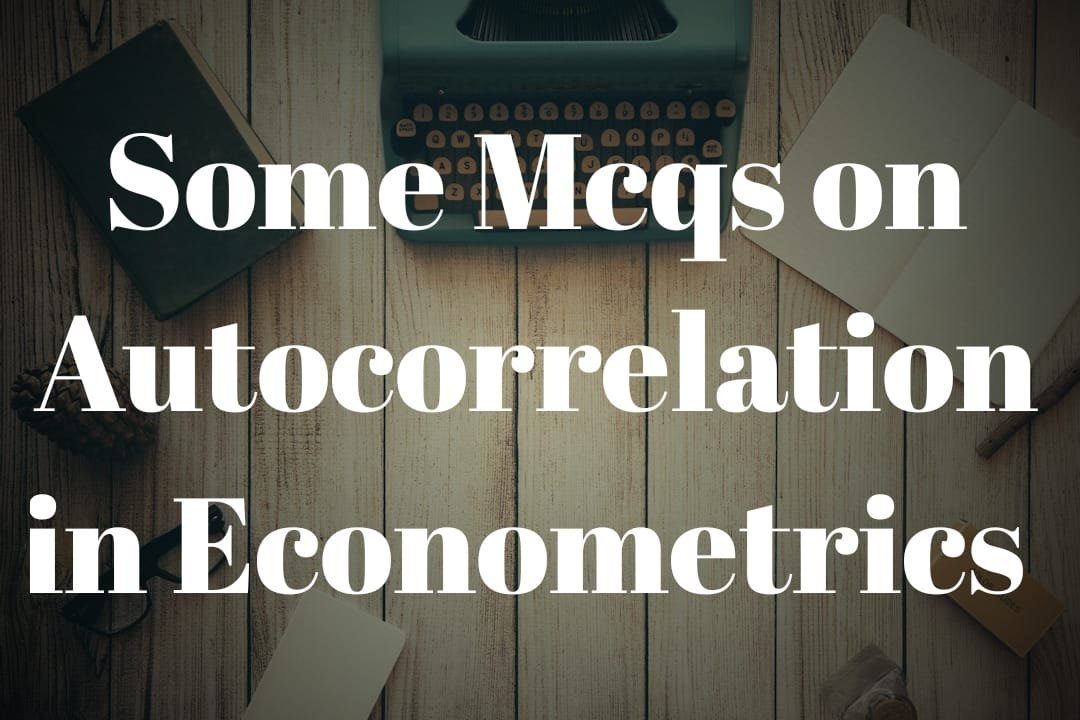Some Multiple Choice Questions (MCQs) on Autocorrelation in Econometrics
/Econometrics (AUTOCORRELATIOn)
1. Autocorrelation refers to:
a) Correlation between two variables b) Correlation between a variable and its lagged values c) Correlation between two different time series d) Correlation between two different populations
Answer: b) Correlation between a variable and its lagged values
2. What is the range of values that the autocorrelation coefficient can take?**
a) -1 to 0 b) 0 to 1 c) -1 to 1 d) 0 to infinity
Answer: c) -1 to 1
3. In a time series plot, if the data points appear to be randomly scattered, then the autocorrelation is:
a) High b) Low c) Cannot be determined from time series plot d) None of the above
Answer: b) Low
4. Which of the following can be used to test the null hypothesis of no autocorrelation?
a) Box-Ljung test b) Student's t-test c) Chi-square test d) ANOVA
Answer: a) Box-Ljung test
5. In a time series plot, if the data points show a periodic pattern, then the autocorrelation is:
a) High b) Low c) Cannot be determined from time series plot d) None of the above
Answer: a) High
6. Which of the following is a possible cause of autocorrelation in time series data?
a) Seasonality b) Trend c) Measurement error d) All of the above
Answer: d) All of the above
7. What does a positive autocorrelation coefficient indicate?
a) There is a positive association between the variable and its lagged values b) There is a negative association between the variable and its lagged values c) There is no association between the variable and its lagged values d) The variable is not stationary
Answer: a) There is a positive association between the variable and its lagged values
8. What does a negative autocorrelation coefficient indicate?
a) There is a positive association between the variable and its lagged values b) There is a negative association between the variable and its lagged values c) There is no association between the variable and its lagged values d) The variable is not stationary
Answer: b) There is a negative association between the variable and its lagged values
9. Which of the following is true about autocorrelation in a stationary time series?
a) The autocorrelation coefficient is constant for all lags b) The autocorrelation coefficient decreases as the lag increases c) The autocorrelation coefficient increases as the lag increases d) The autocorrelation coefficient is zero for all lags
Answer: a) The autocorrelation coefficient is constant for all lags
10. Which of the following methods can be used to remove autocorrelation from a time series?
a) Differencing b) Smoothing c) Regression d) All of the above
Answer: a) Differencing


